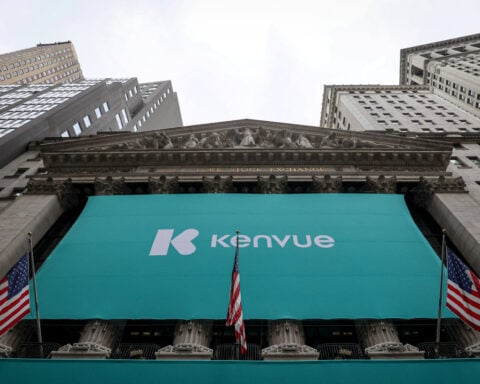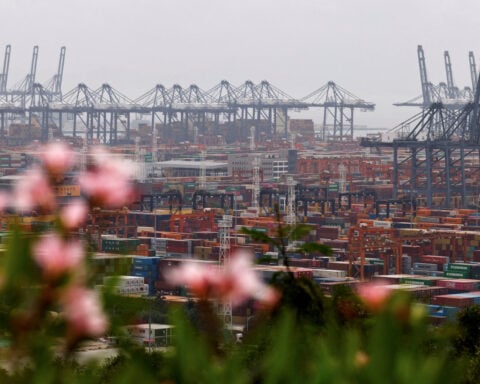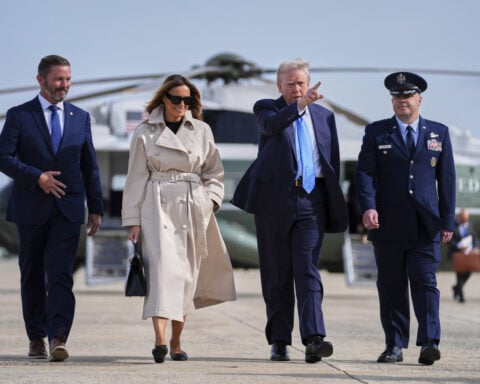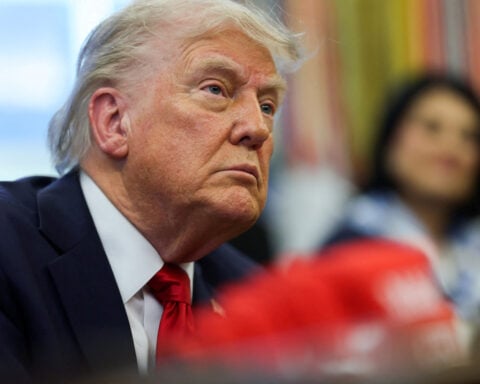NEW YORK (AP) — Long-threatened tariffs from U.S. President Donald Trump have plunged the country into a global trade war — all while on-again, off-again new levies continue to escalate uncertainty.
Trump is no stranger to tariffs. He launched a trade war during his first term, taking particular aim at China by putting taxes on most of its goods. Beijing responded with its own retaliatory tariffs on U.S. products ranging from fruit to automotive imports. Trump also used the threat of more tariffs to force Canada and Mexico to renegotiate a North American trade pact, called the U.S.-Mexico-Canada Agreement, in 2020.
When President Joe Biden took office, he preserved most of the tariffs Trump previously enacted against China, in addition to imposing some new restrictions — but his administration claimed to take a more targeted approach.
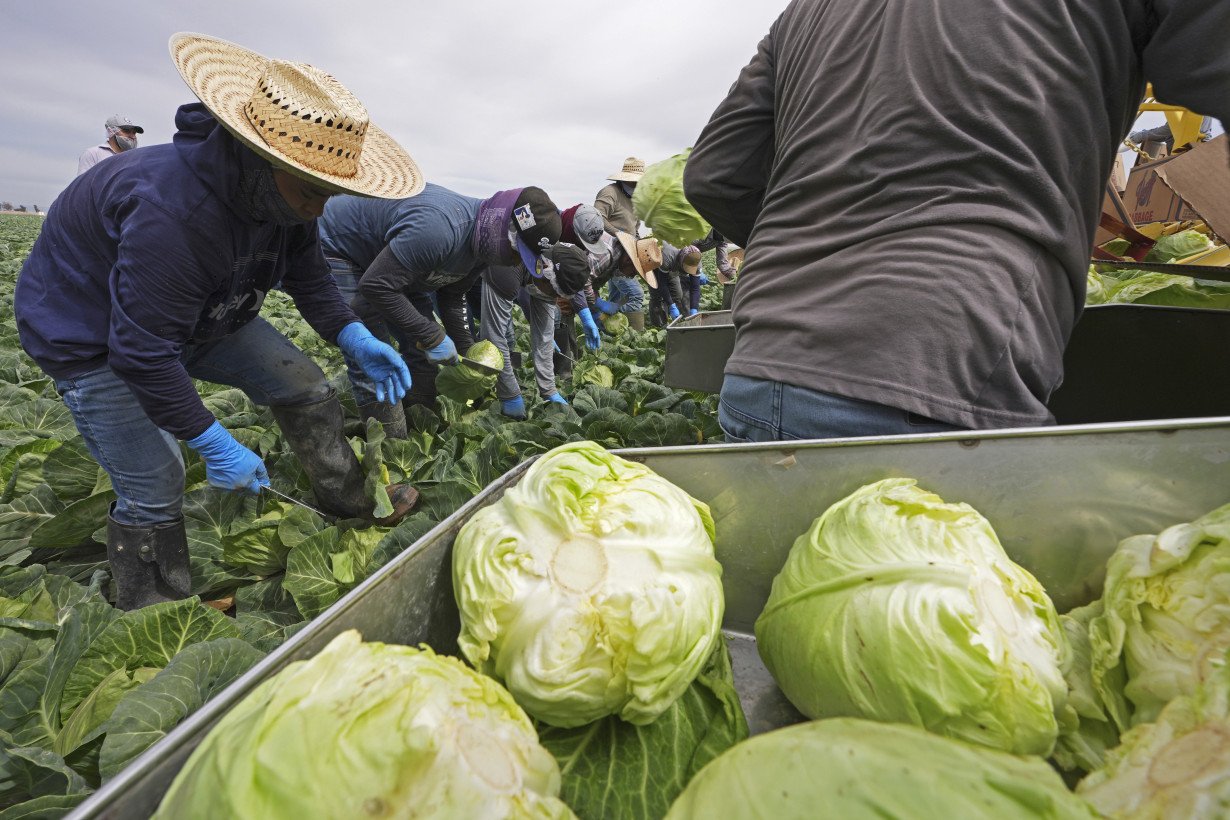
Fast-forward to today and economists stress there could be greater consequences on businesses and economies worldwide under Trump's more sweeping tariffs this time around — and that higher prices will likely leave consumers footing the bill. There's also been a sense of whiplash from Trump's back-and-forth tariff threats and responding retaliation, including some recently-postponed taxes on goods from America's largest trading partners.
Here's a timeline of how we got here:
January 20
Trump is sworn into office. In his inaugural address, he again promises to “tariff and tax foreign countries to enrich our citizens." And he reiterates plans to create an agency called the External Revenue Service, which has yet to be established.
On his first day in office, Trump also says he expects to put 25% tariffs on Canada and Mexico starting on Feb. 1, while declining to immediately flesh out plans for taxing Chinese imports.
January 26
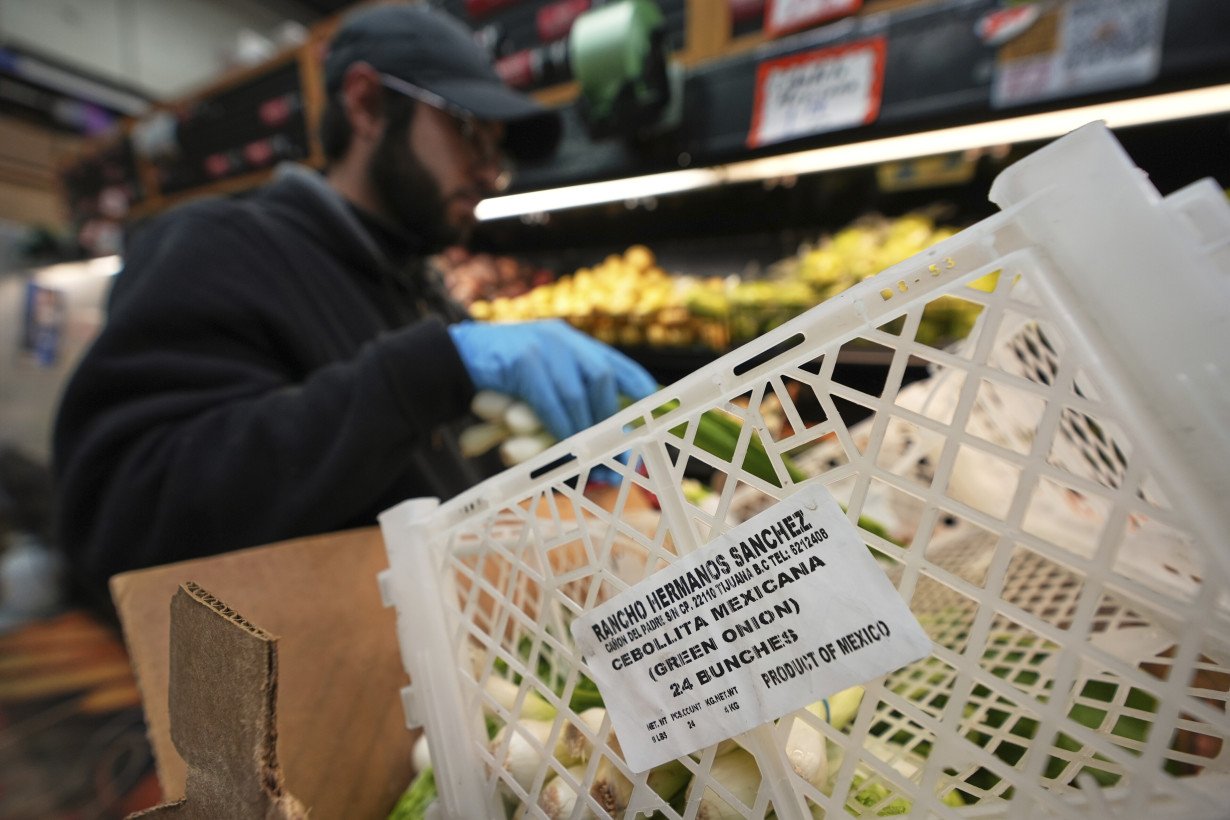
Trump threatens 25% tariffs on all Colombia imports and other retaliatory measures after President Gustavo Petro’s rejects two U.S. military aircraft carrying migrants to the country, accusing Trump of not treating immigrants with dignity during deportation.
In response, Petro also announces a retaliatory 25% increase in Colombian tariffs on U.S. goods. But Colombia later reversed its decision and accepted the flights carrying migrants. The two countries soon signaled a halt in the trade dispute.
February 1
Trump signs an executive order to impose tariffs on imports from Mexico, Canada and China — 10% on all imports from China and 25% on imports from Mexico and Canada starting Feb. 4. Trump invoked this power by declaring a national emergency — ostensibly over undocumented immigration and drug trafficking. The levies on Canada and Mexico threaten to blow up Trump’s own USMCA trade deal, which allowed many products to cross North American borders duty free.
The action prompts swift outrage from all three countries, with promises of retaliatory measures.
February 3
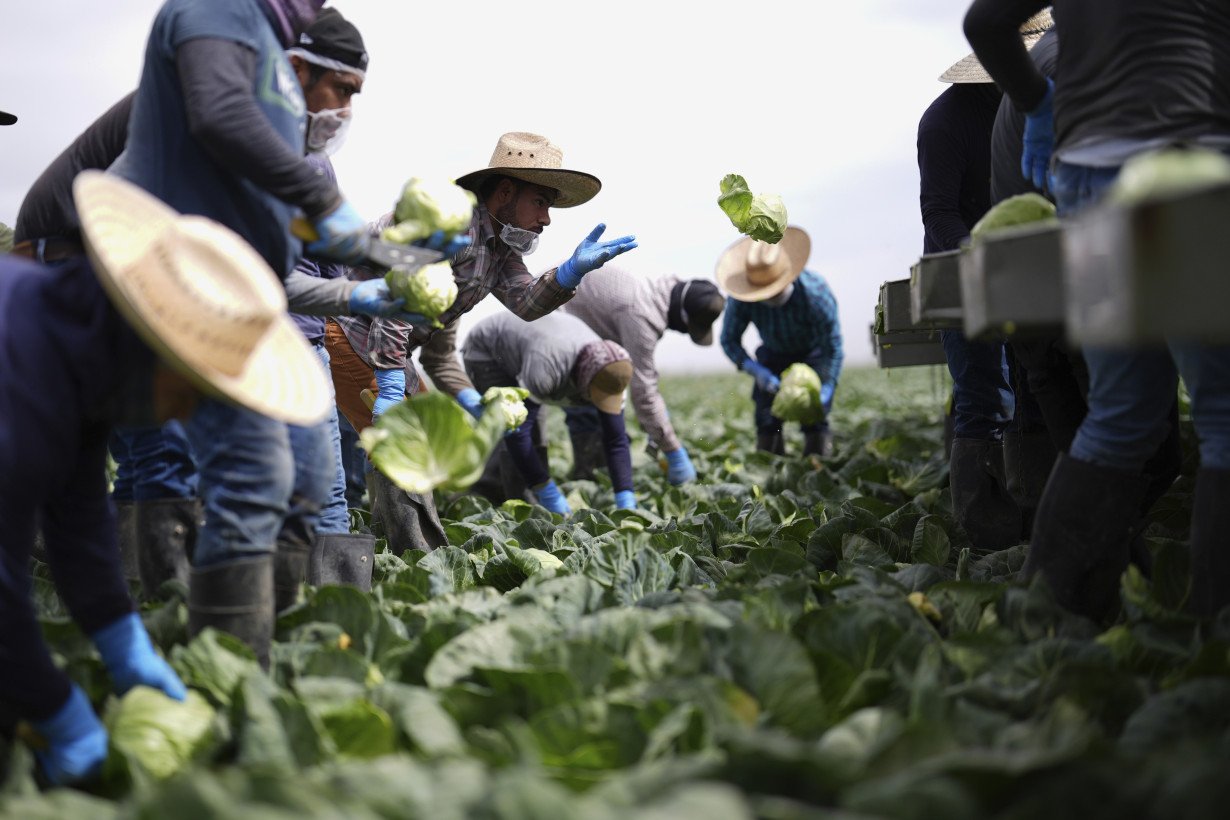
Trump agrees to a 30-day pause on his tariff threats against Mexico and Canada, with both trading partners taking steps to appease Trump's concerns about border security and drug trafficking.
February 4
Trump's new 10% tariffs on all Chinese imports to the U.S. still go into effect. China retaliates the same day by announcing a flurry of countermeasures, including sweeping new duties on a variety of American goods and an anti-monopoly investigation into Google.
China's 15% tariffs on coal and liquefied natural gas products, and a 10% levy on crude oil, agricultural machinery and large-engine cars imported from the U.S., take effect Feb. 10.
February 10
Trump announces plans to hike steel and aluminum tariffs. He removes the exemptions from his 2018 tariffs on steel, meaning that all steel imports will be taxed at a minimum of 25%, and also raises his 2018 aluminum tariffs to 25% from 10% set to go into effect March 12.
February 13
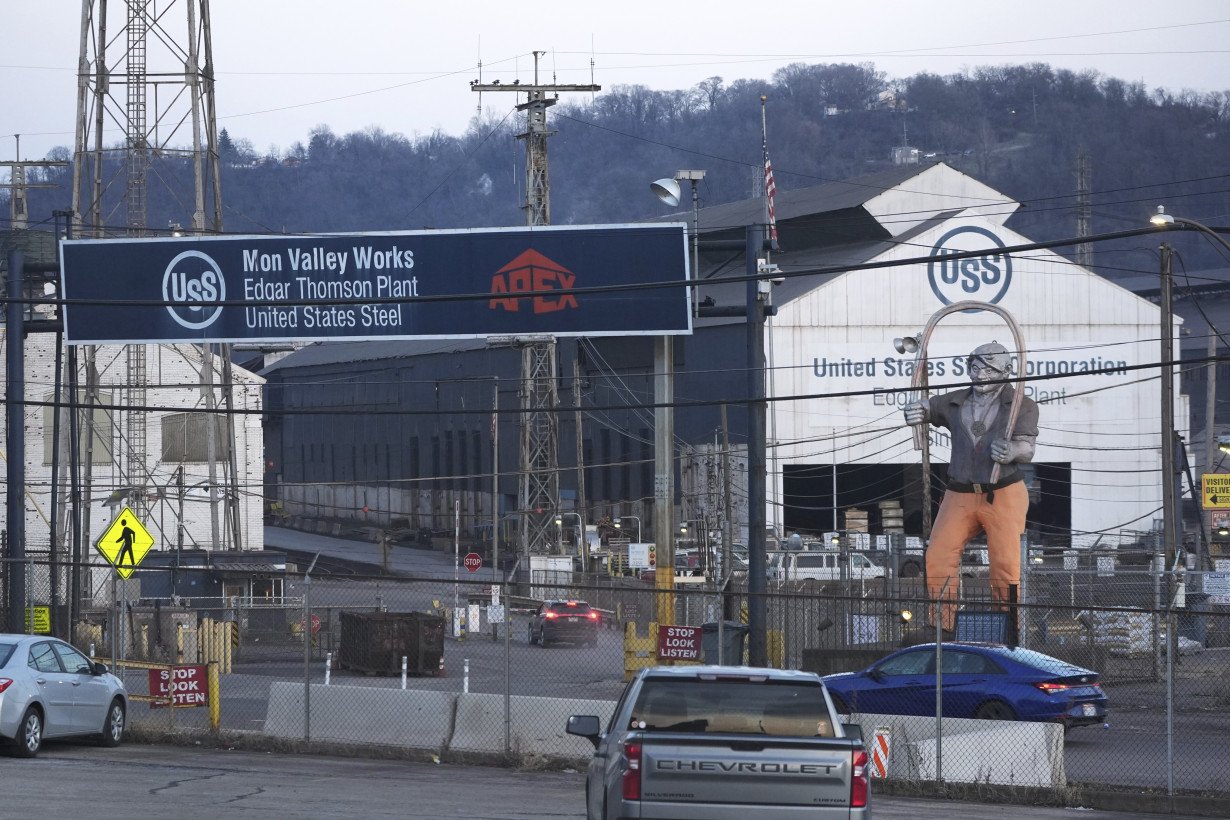
Trump announces a plan for “reciprocal” tariffs — promising to increase U.S. tariffs to match the tax rates that other countries charge on imports “for purposes of fairness.” Economists warn that the reciprocal tariffs, set to overturn decades of trade policy, could create chaos for global businesses.
Beyond China, Canada and Mexico, he indicates that additional countries, such as India, won’t be spared from higher tariffs. And in the following weeks, Trump suggests that European countries could face a 25% levy as part of these efforts.
February 25
Trump signed an executive order instructing the Commerce Department to consider whether a tariff on imported copper is needed to protect national security. He cites the material's use in U.S. defense, infrastructure and emerging technologies.
March 1
Trump signs an additional executive order instructing the Commerce Department to consider whether tariffs on lumber and timber are also needed to protect national security, arguing that the construction industry and military depend on a strong supply of wooden products in the U.S.
March 4

Trump’s 25% tariffs on imports from Canada and Mexico go into effect, though he limits the levy to 10% on Canadian energy. He also doubles the tariff on all Chinese imports to 20%.
All three countries promise retaliatory measures. Canadian Prime Minister Justin Trudeau announces tariffs on more than $100 billion of American goods over the course of 21 days. And Mexican President Claudia Sheinbaum says her country would respond with its own retaliatory tariffs on U.S. goods without specifying the targeted products immediately, signaling hopes to de-escalate.
China, meanwhile, imposes tariffs of up to 15% on a wide array of key U.S. farm exports. It also expands the number of U.S. companies subject to export controls and other restrictions by about two dozen.
March 5
Trump grants a one-month exemption on his new tariffs impacting goods from Mexico and Canada for U.S. automakers. The pause arrives after the president spoke with leaders of the “Big 3” automakers — Ford, General Motors and Stellantis.
March 6
In a wider extension, Trump postpones 25% tariffs on many imports from Mexico and some imports from Canada for a month. But he still plans to impose “reciprocal” tariffs starting on April 2.
Trump credited Sheinbaum with making progress on border security and drug smuggling as a reason for again pausing tariffs — and the Mexican president said in a post on X that she and Trump “had an excellent and respectful call in which we agreed that our work and collaboration have yielded unprecedented results.”
Trump’s actions also thawed relations with Canada somewhat, although outrage and uncertainty over the trade war remains. Still, after its initial retaliatory tariffs of $30 billion Canadian (US$21 billion) on U.S. goods, the government said it had suspended its second wave of retaliatory tariffs worth $125 billion Canadian (US$87 billion).
March 10
China retaliates against Trump’s tariffs by imposing additional 15% taxes on key American farm products, including chicken, pork, soybeans and beef. The escalating trade tensions push stocks lower on Monday as investors worry about the pain Trump’s trade wars risk inflicting on the American economy.
The Chinese tariffs were a response to Trump’s decision to double the levy on Chinese imports to 20% on March 4. China’s Commerce Ministry had earlier said that goods already in transit would be exempt from the retaliatory tariffs until April 12.
March 12
Trump increases tariffs on all steel and aluminum imports to 25%, removing exemptions from his 2018 tariffs on the metals in addition to increasing the tariffs on aluminum from 10%.
The European Union takes retaliatory trade action promising new duties on U.S. industrial and farm products. The measures will cover goods from the United States worth some 26 billion euros ($28 billion), and not just steel and aluminum products, but also textiles, home appliances and agricultural goods. Motorcycles, bourbon, peanut butter and jeans will be hit, as they were during Trump’s first term. The 27-member bloc later says it will delay this retaliatory action until mid-April.
March 13
Trump threatens a 200% tariff on European wine, Champagne and spirits if the European Union goes forward with a planned 50% tariff on American whiskey.
The European import tax, which was unveiled in response to steel and aluminum tariffs by the U.S. administration, is expected to go into effect April 1, just ahead of separate reciprocal tariffs that Trump plans to place on the EU.
March 24
Trump says he will place a 25% tariff on all imports from any country that buys oil or gas from Venezuela, in addition to imposing new tariffs on the South American country itself, starting April 2.
The tariffs would most likely add to the taxes facing China, which in 2023 bought 68% of the oil exported by Venezuela, per the U.S. Energy Information Administration. But a number of countries also receive oil from Venezuela — including the United States itself.

 Trump has begun another trade war. Here's a timeline of how we got here
Trump has begun another trade war. Here's a timeline of how we got here
 Canada's leader laments lost friendship with US in town that sheltered stranded Americans after 9/11
Canada's leader laments lost friendship with US in town that sheltered stranded Americans after 9/11
 Chinese EV giant BYD's fourth-quarter profit leaps 73%
Chinese EV giant BYD's fourth-quarter profit leaps 73%
 You're an American in another land? Prepare to talk about the why and how of Trump 2.0
You're an American in another land? Prepare to talk about the why and how of Trump 2.0
 Chalk talk: Star power, top teams and No. 5 seeds headline the women's March Madness Sweet 16
Chalk talk: Star power, top teams and No. 5 seeds headline the women's March Madness Sweet 16
 Purdue returns to Sweet 16 with 76-62 win over McNeese in March Madness
Purdue returns to Sweet 16 with 76-62 win over McNeese in March Madness

